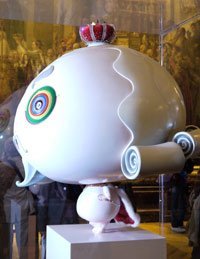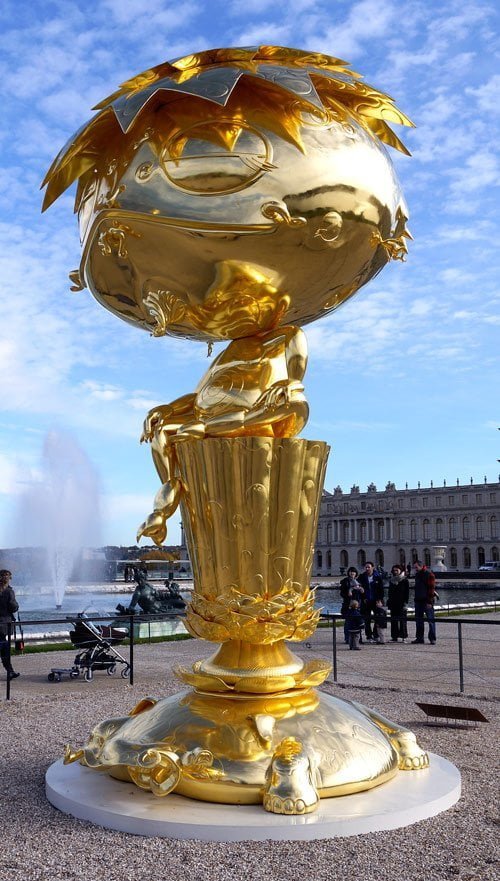I’ve just spent four days visiting art galleries, museums and churches in Paris and I’m quite zapped out with art. My head is spinning with ideas and insights. The most difficult juxtaposition to reconcile was the Murakami exhibition at Versailles.
Takashi Murakami makes giant manga-inspired works of art. At first sight they look like advertisements for Bandai Tamagotchi Toys. But of course it is the other way round. The tamagotchi toys and the manga books and movies are the inspiration for his art.
 The picture above is of an installation/model (call it what you like) called “The Emperor’s New Clothes”. Now Murakami is really playing with our heads! It is set in a vast, ornate room at the Palace of Versailles, in which hangs an enormous painting of Napoleon Bonaparte crowning Josephine his Empress.
The picture above is of an installation/model (call it what you like) called “The Emperor’s New Clothes”. Now Murakami is really playing with our heads! It is set in a vast, ornate room at the Palace of Versailles, in which hangs an enormous painting of Napoleon Bonaparte crowning Josephine his Empress.
The Painting – high art as we have come to understand it – is not mocked, but questioned by the new upstart.
To western eyes the Murakami looks like a cheeky shop window display – cute and ephemeral. “Oooh! It’s manga!” I heard several people say, as if that made it all okay. It would be similar to the Japanese staring at the Mona Lisa and saying, “Oooh! It’s a painting!”
Of the two, old painting and the new installation, the new actually asks more questions about Art than the old ever will. A painting of Napoleon crowning Josephine is not high art. At it’s best it is illustration or historical record keeping, at its worst, shameless propaganda.
At First, I thought Murakami’s work was just tongue-in-cheek fun, until I Came to his last installation. The carpet was a ridiculous, dizzying quarter-acre of smiling,happy daisies. On the back wall, a huge panel displayed more happy daisies on a gold background. But then I realised that it wasn’t a panel, but really a modern version of an antique Japanese screen that I would normally admire with a sense of reverence. I love Japanese art for it’s quality and and high craftsmanship.
And then I understood Murakami’s game. He takes the myths and heros of modern storytelling – manga and anime – and translates them into gaudy objects of ostentatious wealth and power through high craftsmanship. These are then placed into an environment that did exactly the same with Greek and Roman myths and heroes some three hundred years ago. Time and propaganda has taught us to revere Versailles’ glories of the past – Murakami is teaching us to see, understand and begin to revere the glories of the present.


